1. Gao J, Tang C, Tai LW, Ouyang Y, Li N, Hu Z, et al. Pro-resolving mediator maresin 1 ameliorates pain hypersensitivity in a rat spinal nerve ligation model of neuropathic pain. J Pain Res. 2018; 11:1511–9. DOI:
10.2147/JPR.S160779. PMID:
30127635. PMCID:
6089120.

2. Oh SH, So HJ, Lee HY, Lim KJ, Yoon MH, Jung KT. Urinary trypsin inhibitor attenuates the development of neuropathic pain following spinal nerve ligation. Neurosci Lett. 2015; 590:150–5. DOI:
10.1016/j.neulet.2015.01.070. PMID:
25643619.

3. Guindon J, Hohmann AG. Cannabinoid CB2 receptors: a therapeutic target for the treatment of inflammatory and neuropathic pain. Br J Pharmacol. 2008; 153:319–34. DOI:
10.1038/sj.bjp.0707531. PMID:
17994113. PMCID:
2219541.

4. Sacerdote P, Franchi S, Moretti S, Castelli M, Procacci P, Magnaghi V, et al. Cytokine modulation is necessary for efficacious treatment of experimental neuropathic pain. J Neuroimmune Pharmacol. 2013; 8:202–11. DOI:
10.1007/s11481-012-9428-2. PMID:
23242694.

5. Austin PJ, Moalem-Taylor G. The neuro-immune balance in neuropathic pain: involvement of inflammatory immune cells, immune-like glial cells and cytokines. J Neuroimmunol. 2010; 229:26–50. DOI:
10.1016/j.jneuroim.2010.08.013. PMID:
20870295.

8. Zelenka M, Schäfers M, Sommer C. Intraneural injection of interleukin-1beta and tumor necrosis factor-alpha into rat sciatic nerve at physiological doses induces signs of neuropathic pain. Pain. 2005; 116:257–63. DOI:
10.1016/j.pain.2005.04.018. PMID:
15964142.
9. Myers RR, Campana WM, Shubayev VI. The role of neuroinflammation in neuropathic pain: mechanisms and therapeutic targets. Drug Discov Today. 2006; 11:8–20. DOI:
10.1016/S1359-6446(05)03637-8. PMID:
16478686.

10. Schäfers M, Brinkhoff J, Neukirchen S, Marziniak M, Sommer C. Combined epineurial therapy with neutralizing antibodies to tumor necrosis factor-alpha and interleukin-1 receptor has an additive effect in reducing neuropathic pain in mice. Neurosci Lett. 2001; 310:113–6. DOI:
10.1016/S0304-3940(01)02077-8. PMID:
11585580.

11. Sommer C, Petrausch S, Lindenlaub T, Toyka KV. Neutralizing antibodies to interleukin 1-receptor reduce pain associated behavior in mice with experimental neuropathy. Neurosci Lett. 1999; 270:25–8. DOI:
10.1016/S0304-3940(99)00450-4. PMID:
10454137.

12. Park JH, Kwak SH, Jeong CW, Bae HB, Kim SJ. Effect of ulinastatin on cytokine reaction during gastrectomy. Korean J Anesthesiol. 2010; 58:334–7. DOI:
10.4097/kjae.2010.58.4.334. PMID:
20508788. PMCID:
2876852.

13. Moggia E, Koti R, Belgaumkar AP, Fazio F, Pereira SP, Davidson BR, et al. Pharmacological interventions for acute pancreatitis. Cochrane Database Syst Rev. 2017; 4:CD011384. DOI:
10.1002/14651858.CD011384.pub2. PMID:
28431202. PMCID:
6478067.

14. Jung KT, Lee HY, Yoon MH, Lim KJ. The effect of urinary trypsin inhibitor against neuropathic pain in rat models. Korean J Pain. 2013; 26:356–60. DOI:
10.3344/kjp.2013.26.4.356. PMID:
24156001. PMCID:
3800707.

15. Taoka Y, Okajima K, Uchiba M, Murakami K, Kushimoto S, Johno M, et al. Gabexate mesilate, a synthetic protease inhibitor, prevents compression-induced spinal cord injury by inhibiting activation of leukocytes in rats. Crit Care Med. 1997; 25:874–9. DOI:
10.1097/00003246-199705000-00026. PMID:
9187610.

16. Shih RH, Wang CY, Yang CM. NF-kappaB signaling pathways in neurological inflammation: a mini review. Front Mol Neurosci. 2015; 8:77. DOI:
10.3389/fnmol.2015.00077. PMID:
26733801. PMCID:
4683208.

17. Colasanti M, Persichini T, Venturini G, Menegatti E, Lauro GM, Ascenzi P. Effect of gabexate mesylate (FOY), a drug for serine proteinase-mediated diseases, on the nitric oxide pathway. Biochem Biophys Res Commun. 1998; 246:453–6. DOI:
10.1006/bbrc.1998.8642. PMID:
9610382.

18. Carrasco C, Naziroğlu M, Rodríguez AB, Pariente JA. Neuropathic pain: delving into the oxidative origin and the possible implication of transient receptor potential channels. Front Physiol. 2018; 9:95. DOI:
10.3389/fphys.2018.00095. PMID:
29491840. PMCID:
5817076.

21. Kim SH, Chung JM. An experimental model for peripheral neuropathy produced by segmental spinal nerve ligation in the rat. Pain. 1992; 50:355–63. DOI:
10.1016/0304-3959(92)90041-9. PMID:
1333581.

22. Chung JM, Kim HK, Chung K. Segmental spinal nerve ligation model of neuropathic pain. Methods Mol Med. 2004; 99:35–45. DOI:
10.1385/1-59259-770-X:035. PMID:
15131327.

23. Chaplan SR, Bach FW, Pogrel JW, Chung JM, Yaksh TL. Quantitative assessment of tactile allodynia in the rat paw. J Neurosci Methods. 1994; 53:55–63. DOI:
10.1016/0165-0270(94)90144-9. PMID:
7990513.

24. Thacker MA, Clark AK, Marchand F, McMahon SB. Pathophysiology of peripheral neuropathic pain: immune cells and molecules. Anesth Analg. 2007; 105:838–47. DOI:
10.1213/01.ane.0000275190.42912.37. PMID:
17717248.

25. Uçeyler N, Sommer C. Cytokine regulation in animal models of neuropathic pain and in human diseases. Neurosci Lett. 2008; 437:194–8. DOI:
10.1016/j.neulet.2008.03.050. PMID:
18403115.

26. Gao YJ, Zhang L, Samad OA, Suter MR, Yasuhiko K, Xu ZZ, et al. JNK-induced MCP-1 production in spinal cord astrocytes contributes to central sensitization and neuropathic pain. J Neurosci. 2009; 29:4096–108. DOI:
10.1523/JNEUROSCI.3623-08.2009. PMID:
19339605. PMCID:
2682921.

27. Shamash S, Reichert F, Rotshenker S. The cytokine network of Wallerian degeneration: tumor necrosis factor-alpha, interleukin-1alpha, and interleukin-1beta. J Neurosci. 2002; 22:3052–60. DOI:
10.1523/JNEUROSCI.22-08-03052.2002. PMID:
11943808. PMCID:
6757534.
29. Gui WS, Wei X, Mai CL, Murugan M, Wu LJ, Xin WJ, et al. Interleukin-1β overproduction is a common cause for neuropathic pain, memory deficit, and depression following peripheral nerve injury in rodents. Mol Pain. 2016; 12:1744806916646784. DOI:
10.1177/1744806916646784. PMID:
27175012. PMCID:
4956151.

30. Li X, Wang J, Wang Z, Dong C, Dong X, Jing Y, et al. Tumor necrosis factor-α of red nucleus involved in the development of neuropathic allodynia. Brain Res Bull. 2008; 77:233–6. DOI:
10.1016/j.brainresbull.2008.08.025. PMID:
18824078.

31. Ding CP, Xue YS, Yu J, Guo YJ, Zeng XY, Wang JY. The red nucleus interleukin-6 participates in the maintenance of neuropathic pain induced by spared nerve injury. Neurochem Res. 2016; 41:3042–51. DOI:
10.1007/s11064-016-2023-9. PMID:
27485712.

32. Lu Y, Cao DL, Jiang BC, Yang T, Gao YJ. MicroRNA-146a-5p attenuates neuropathic pain via suppressing TRAF6 signaling in the spinal cord. Brain Behav Immun. 2015; 49:119–29. DOI:
10.1016/j.bbi.2015.04.018. PMID:
25957028.

33. Lu Y, Jiang BC, Cao DL, Zhang ZJ, Zhang X, Ji RR, et al. TRAF6 upregulation in spinal astrocytes maintains neuropathic pain by integrating TNF-α and IL-1β signaling. Pain. 2014; 155:2618–29. DOI:
10.1016/j.pain.2014.09.027. PMID:
25267210. PMCID:
4250420.

34. Lin TB, Hsieh MC, Lai CY, Cheng JK, Chau YP, Ruan T, et al. Fbxo3-dependent Fbxl2 ubiquitination mediates neuropathic allodynia through the TRAF2/TNIK/GluR1 cascade. J Neurosci. 2015; 35:16545–60. DOI:
10.1523/JNEUROSCI.2301-15.2015. PMID:
26674878. PMCID:
6605509.

36. Liu DL, Zhao LX, Zhang S, Du JR. Peroxiredoxin 1-mediated activation of TLR4/NF-κB pathway contributes to neuroinflammatory injury in intracerebral hemorrhage. Int Immunopharmacol. 2016; 41:82–9. DOI:
10.1016/j.intimp.2016.10.025. PMID:
27821296.

37. Pei W, Zou Y, Wang W, Wei L, Zhao Y, Li L. Tizanidine exerts anti-nociceptive effects in spared nerve injury model of neuropathic pain through inhibition of TLR4/NF-κB pathway. Int J Mol Med. 2018; 42:3209–19. DOI:
10.3892/ijmm.2018.3878. PMID:
30221670. PMCID:
6202089.

38. Lee KM, Kang BS, Lee HL, Son SJ, Hwang SH, Kim DS, et al. Spinal NF-kB activation induces COX-2 upregulation and contributes to inflammatory pain hypersensitivity. Eur J Neurosci. 2004; 19:3375–81. DOI:
10.1111/j.0953-816X.2004.03441.x. PMID:
15217394.

39. Meunier A, Latrémolière A, Dominguez E, Mauborgne A, Philippe S, Hamon M, et al. Lentiviral-mediated targeted NF-kappaB blockade in dorsal spinal cord glia attenuates sciatic nerve injury-induced neuropathic pain in the rat. Mol Ther. 2007; 15:687–97. DOI:
10.1038/sj.mt.6300107. PMID:
28192702.
40. Brambilla R, Bracchi-Ricard V, Hu WH, Frydel B, Bramwell A, Karmally S, et al. Inhibition of astroglial nuclear factor kappaB reduces inflammation and improves functional recovery after spinal cord injury. J Exp Med. 2005; 202:145–56. DOI:
10.1084/jem.20041918. PMID:
15998793. PMCID:
2212896.
41. Rivot JP, Montagne-Clavel J, Besson JM. Subcutaneous formalin and intraplantar carrageenan increase nitric oxide release as measured by in vivo voltammetry in the spinal cord. Eur J Pain. 2002; 6:25–34. DOI:
10.1053/eujp.2001.0268. PMID:
11888225.

42. Schomberg D, Ahmed M, Miranpuri G, Olson J, Resnick DK. Neuropathic pain: role of inflammation, immune response, and ion channel activity in central injury mechanisms. Ann Neurosci. 2012; 19:125–32. DOI:
10.5214/ans.0972.7531.190309. PMID:
25205985. PMCID:
4117080.

43. Gao X, Kim HK, Chung JM, Chung K. Reactive oxygen species (ROS) are involved in enhancement of NMDA-receptor phosphorylation in animal models of pain. Pain. 2007; 131:262–71. DOI:
10.1016/j.pain.2007.01.011. PMID:
17317010. PMCID:
2048490.

44. Inoue T, Mashimo T, Shibata M, Shibuta S, Yoshiya I. Rapid development of nitric oxide-induced hyperalgesia depends on an alternate to the cGMP-mediated pathway in the rat neuropathic pain model. Brain Res. 1998; 792:263–70. DOI:
10.1016/S0006-8993(98)00147-4. PMID:
9593928.

45. Roche AK, Cook M, Wilcox GL, Kajander KC. A nitric oxide synthesis inhibitor (L-NAME) reduces licking behavior and Fos-labeling in the spinal cord of rats during formalin-induced inflammation. Pain. 1996; 66:331–41. DOI:
10.1016/0304-3959(96)03025-4. PMID:
8880857.

46. Lee HL, Lee KM, Son SJ, Hwang SH, Cho HJ. Temporal expression of cytokines and their receptors mRNAs in a neuropathic pain model. Neuroreport. 2004; 15:2807–11. DOI:
10.1097/00001756-200412220-00024. PMID:
15597059.
47. Röyttä M, Wei H, Pertovaara A. Spinal nerve ligation-induced neuropathy in the rat: sensory disorders and correlation between histology of the peripheral nerves. Pain. 1999; 80:161–70. DOI:
10.1016/S0304-3959(98)00199-7. PMID:
10204728.

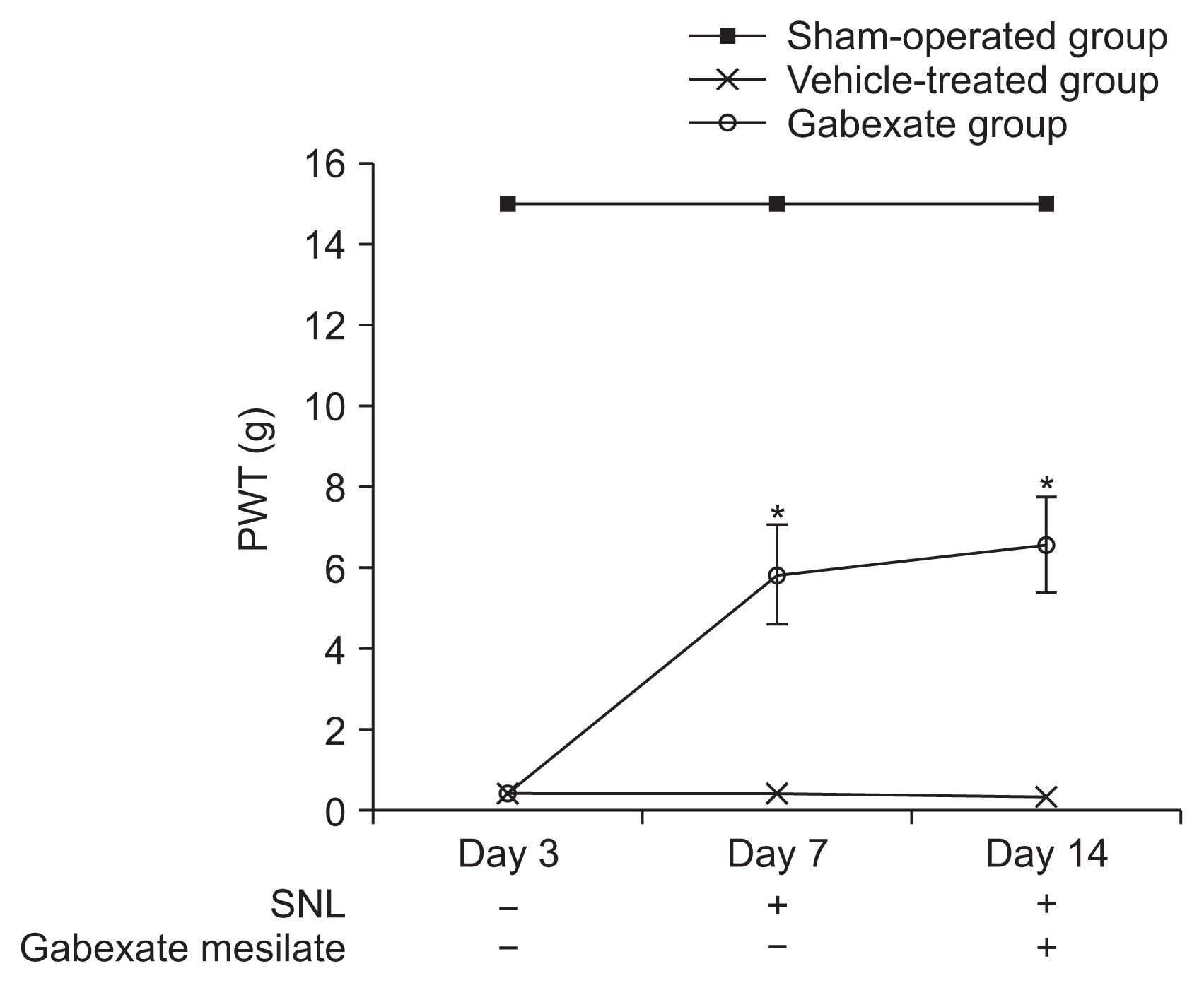
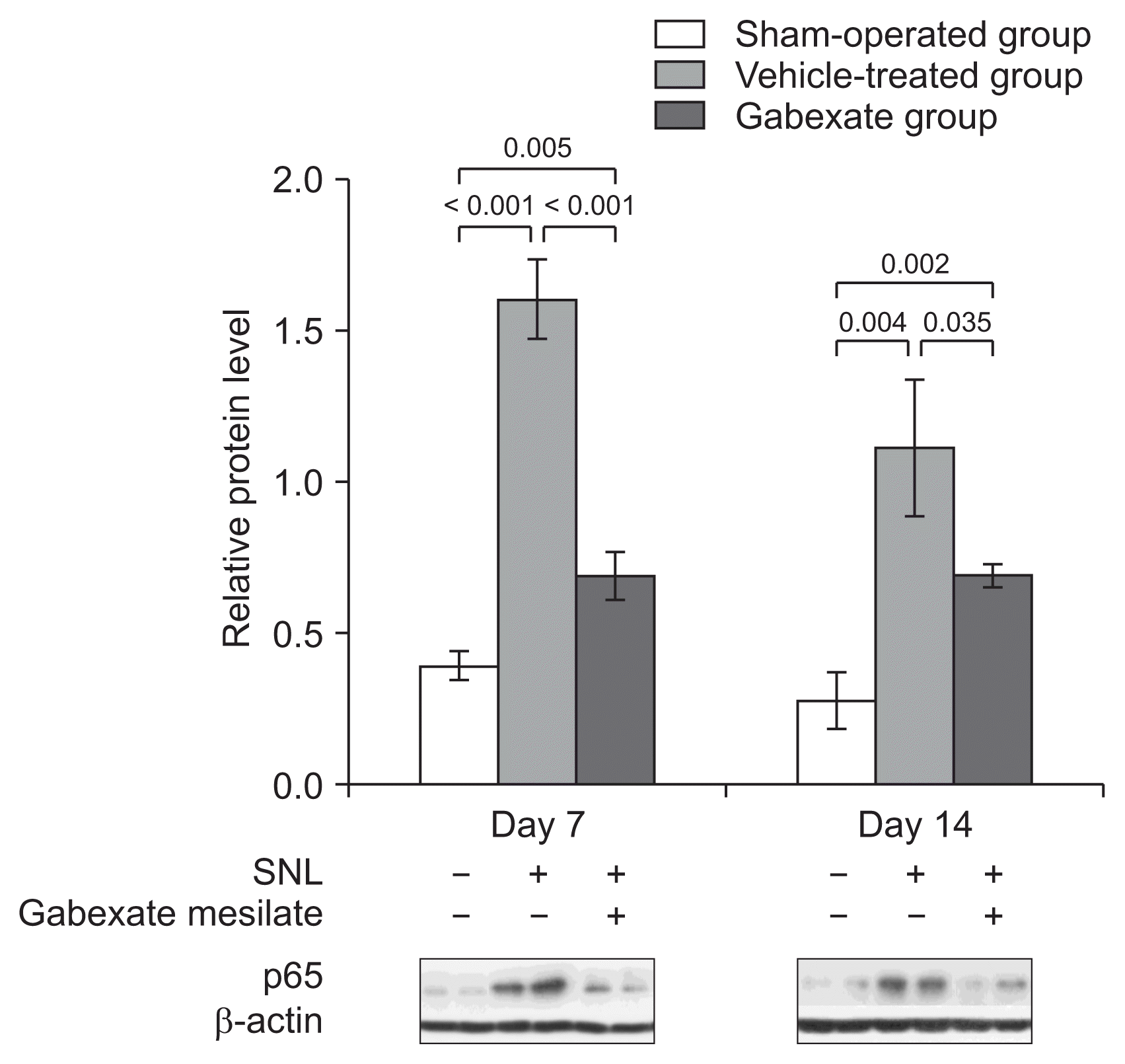
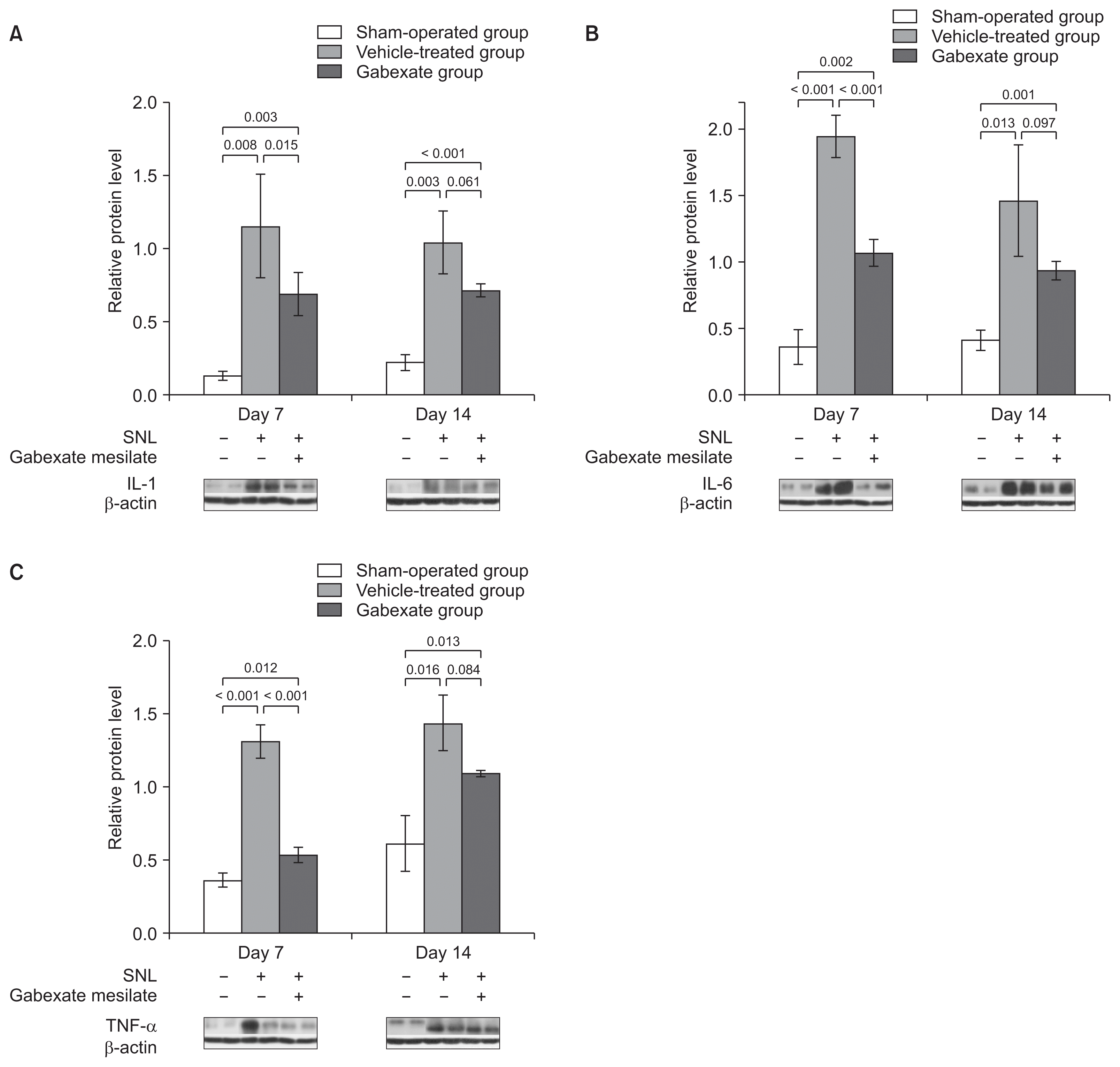
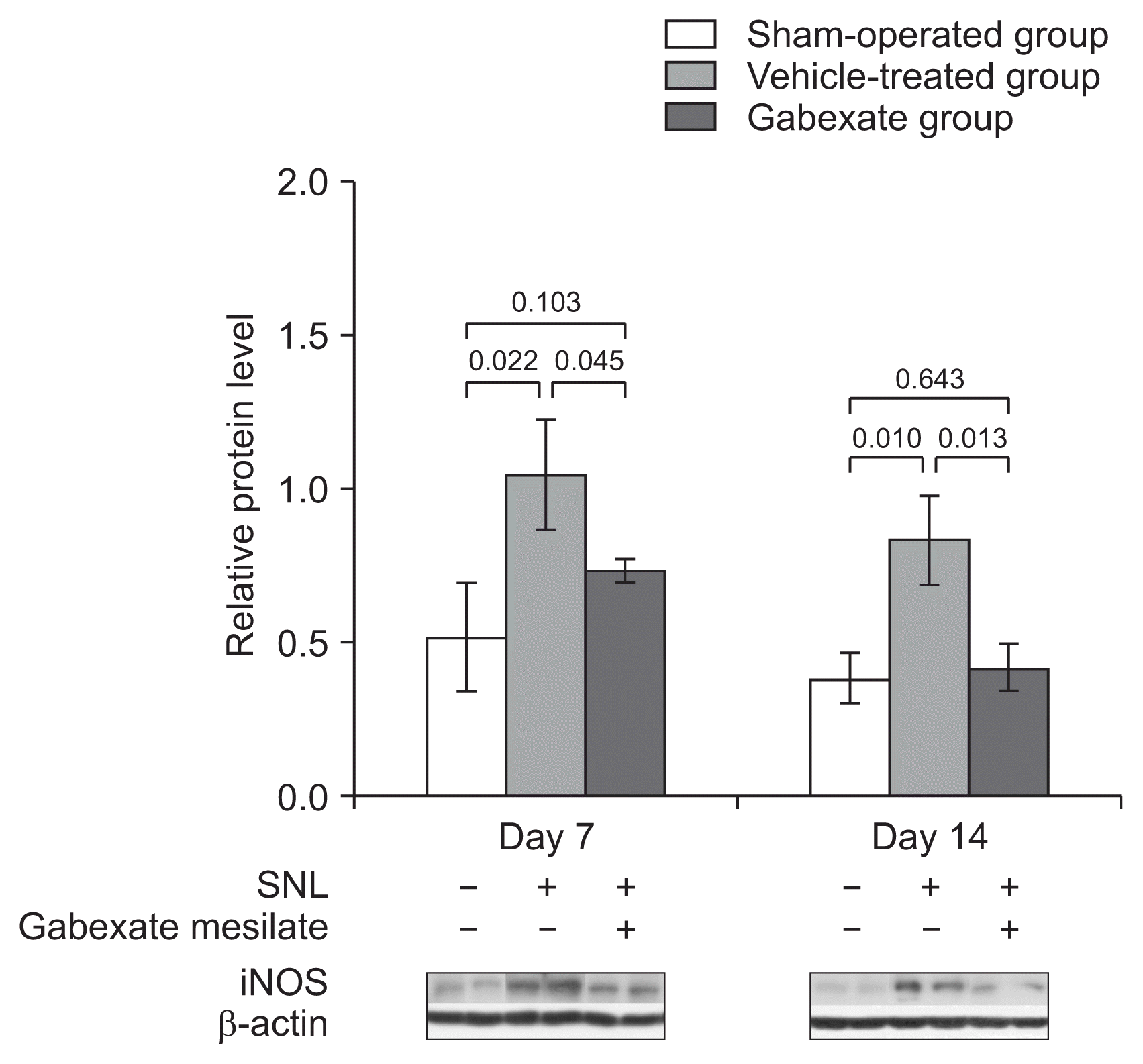




 PDF
PDF Citation
Citation Print
Print


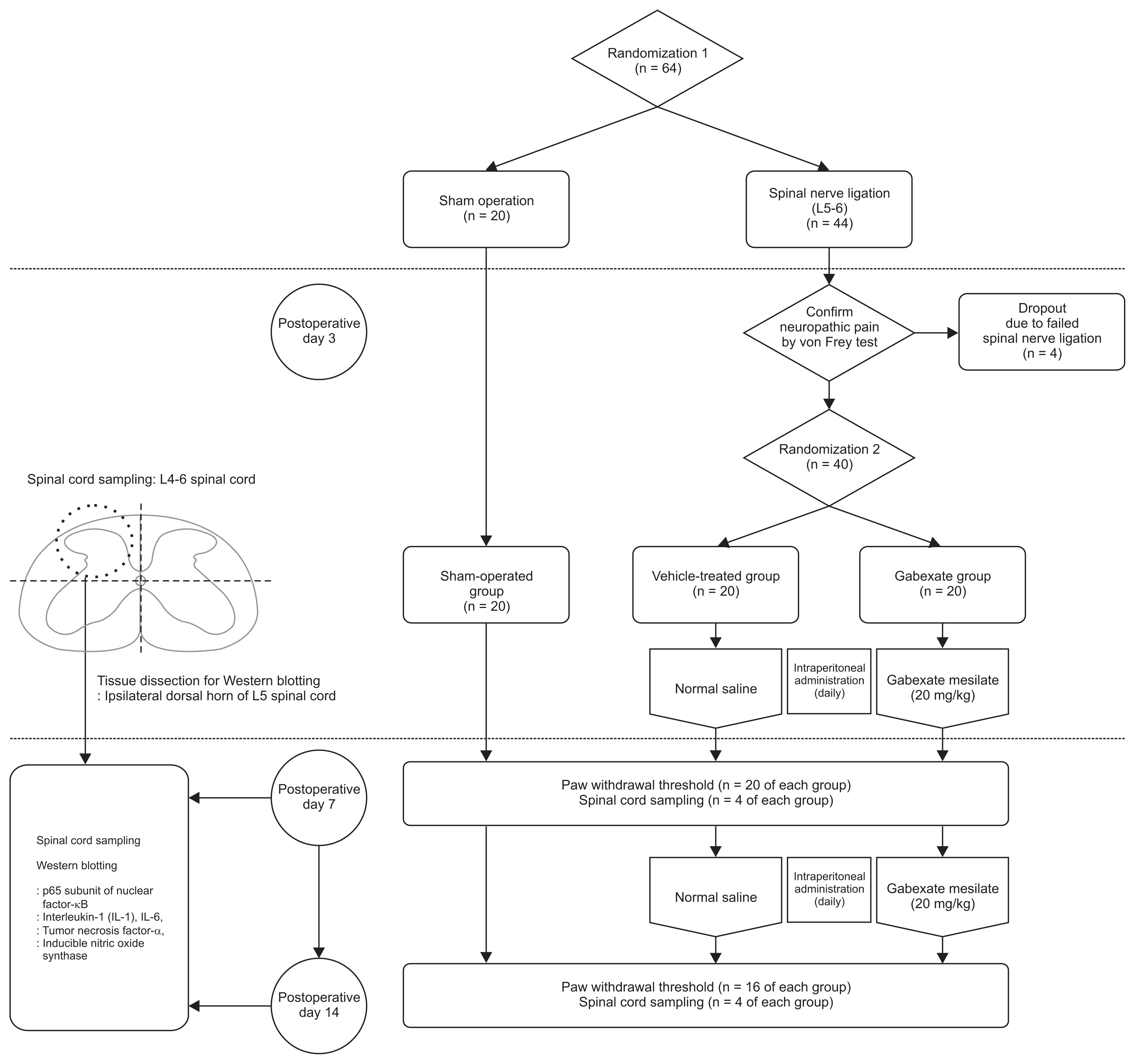
 XML Download
XML Download